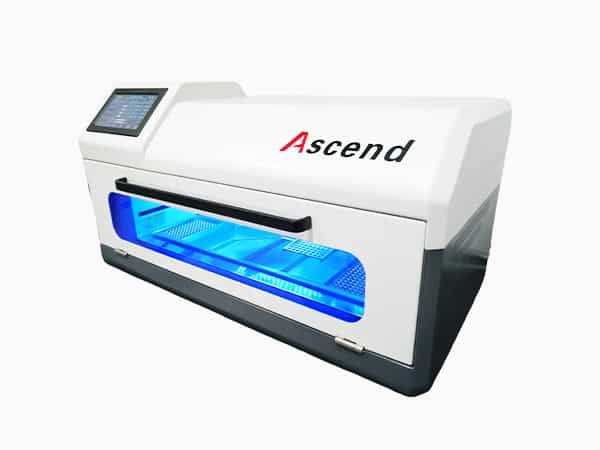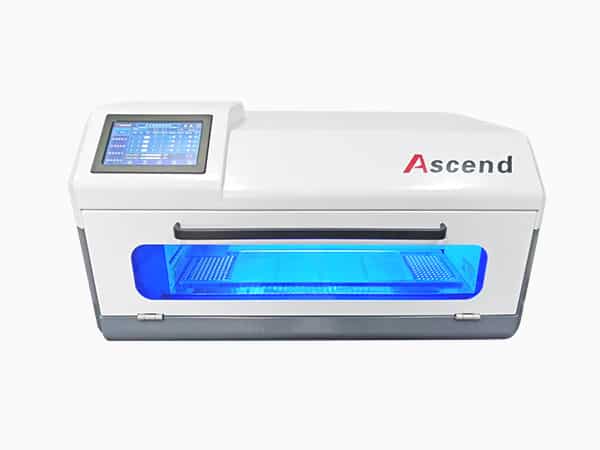How to choose the right nucleic acid extraction system
The nucleic acid extraction system is an instrument that automatically completes the nucleic acid extraction work of samples by applying matching nucleic acid extraction reagents. It is widely used in various fields such as the Center for Disease Control, clinical disease diagnosis, blood transfusion safety, forensic identification, environmental microbiological testing, food safety testing, animal husbandry and molecular biology research.
Nucleic acid extraction system classification

1. Divided according to the size of the instrument model
1) Automatic liquid workstation
The automatic liquid workstation is a very powerful device, which automatically completes liquid dispensing and aspiration, and can even realize full automation of specimen extraction, amplification, and detection by integrating functions such as amplification and detection. Nucleic acid extraction is only one application of its function, and it is not suitable for routine laboratory extraction of nucleic acid. It is generally applied to the experimental needs of a single type of specimen and a very large amount of specimens (at least 96, generally several hundred) at a time. The platform establishment and operation of automatic workstations require relatively large funds.
2) Small-scale automatic nucleic acid extraction system The small-scale automatic instrument achieves the purpose of automatic nucleic acid extraction through the particularity of the operating structure, and can be used in any laboratory.
2. Differ according to the extraction principle

1) Instruments using spin column method
The centrifugal column method nucleic acid extraction system mainly uses a combination of a centrifuge and an automatic pipetting device. The throughput is generally 1-12 samples. The operation time is about the same as manual extraction. It does not improve the actual work efficiency and is expensive. Different models The consumables of the instrument are not universal, and are only suitable for large-scale laboratories with sufficient funds.
2) Instruments using magnetic bead method
Using magnetic beads as a carrier, using the principle of magnetic beads adsorbing nucleic acids under high salt and low pH values, and separating them from nucleic acids under low salt and high pH values, the entire nucleic acid extraction and purification process is realized by moving the magnetic beads or transferring the liquid. Due to its unique principle, it can be designed into a variety of fluxes. It can be extracted from a single tube or 8-96 samples, and its operation is simple and fast. It only takes 30-45min to extract 96 samples, which greatly improves The efficiency of the experiment and the low cost allow it to be used in different laboratories. It is currently the mainstream instrument on the market.
The magnetic bead method automatic nucleic acid extraction system is divided into the magnetic rod method and the suction method.
Let me talk about the suction method first: as the name implies, the suction method is carried out by an automatic pipetting device. The lysis solution is added through the automatic pipetting device and the magnetic beads are adsorbed; the lysis solution is removed, the rinsing solution is added, the magnetic beads are adsorbed, and the rinsing is removed. Solution, add elution buffer. There seems to be no problem from the steps, but the biggest problem with the suction method is that in order not to remove the magnetic beads when removing the waste liquid, the pipette should not be too close to the magnetic beads to prevent the magnetic beads and the waste liquid from being sucked out. There is always a small part of the waste liquid that cannot be completely removed each time, especially the device with the magnet at the bottom. Because the magnetic beads are attracted to the bottom by the magnet, the pipette should not be too close to the bottom, so that the rinsing solution cannot be completely removed. Removal, the residual salt and ethanol in the rinsing solution will affect the subsequent elution efficiency and PCR success rate; the magnet on the side of the device will have less residual fluid, but the elution efficiency is not good, relying on the self-dissolving of the DNA to wash In the de-buffered solution, unless you wait for more than half an hour, some 96 automatic nucleic acid extraction workstations require 150 minutes for one round of extraction. The same time for the 32-magnet method can be used for 5 rounds.
Let’s talk about the magnetic rod method nucleic acid extraction system: flux usually has 8, 16, 32, 96 channels. Compared with the suction method, the advantage of the magnetic rod method is that the liquid in each step does not remain, because the magnetic rod only takes away the magnetic beads and transfers Go to the corresponding reaction wells in the next step. In addition, the extraction system of the magnetic rod method is better to have more complete functions, such as heating, and each heating tank should be independently temperature controlled, so that heating, pyrolysis, and elution can be set. Different temperatures, another very important point is that the motor that drives the magnetic rod must be able to drive the magnetic rod to quickly mix and stir the liquid, so as to facilitate automation and facilitate the lysis and thorough rinsing. The flux selection of the magnetic rod method is best to be 32 channels. The 96 channels seem to have higher flux, but there is a very practical problem. When 96 magnetic rods are transferred from one plate to another, the magnetic rods What to do if the liquid drops halfway, it will drip into other holes and cause pollution, and the 32-channel magnetic rod does not pass through the sky above other samples, so there will be no cross-contamination.
The basic principle of magnetic bead nucleic acid extraction system

1. The suction method
1. The suction method, also called the pipetting method, is to extract nucleic acid by fixing magnetic beads and transferring liquid. Generally, the operation system controls the mechanical arm to realize the transfer. The extraction process is as follows:
1) Lysis: Add the lysis solution to the sample, realize the mixing and full reaction of the reaction solution through mechanical movement and heating, cell lysis, and release of nucleic acid.
2) Adsorption: Add magnetic beads to the sample lysing solution and mix them thoroughly. The magnetic beads have a strong affinity for nucleic acids under high salt and low pH values to adsorb nucleic acids. Under the action of an external magnetic field, the magnetic beads are separated from the solution. , Use the tip to remove the liquid and discard it to the waste tank, and discard the tip.
3) Washing: Remove the external magnetic field, replace with a new tip, add washing buffer solution, mix thoroughly to remove impurities, and remove the liquid under the action of an external magnetic field.
4) Elution: Remove the external magnetic field, replace with a new tip, add elution buffer, and mix thoroughly. The bound nucleic acid is separated from the magnetic beads to obtain purified nucleic acid.
2. Magnetic rod method
The magnetic rod method realizes the separation of nucleic acids by fixing the liquid and transferring the magnetic beads. The principle and process are the same as the suction method, but the difference is the method of separating the magnetic beads and the liquid. The magnetic rod method is to separate the magnetic beads from the waste liquid through the adsorption of the magnetic beads on the magnetic rod, and put them into the next liquid to realize the extraction of nucleic acid.
Features of magnetic bead method nucleic acid extractor
1. Able to realize automatic and high-throughput operation.
2. The operation is simple and fast.
3. Safety and environmental protection.
4. High purity and high yield.
5. No pollution and stable results.
6. Low cost, convenient for wide application.
7. Can process different types of samples at the same time.
Precautions
1. The installation environment of the instrument: normal atmospheric pressure (altitude should be lower than 3000m), temperature 20-35℃, typical use temperature 25℃, relative humidity 10%-80%, unobstructed air flow is 35℃ or below.
2. Avoid placing the instrument near a heat source, such as an electric heater; at the same time, to prevent short circuits of electronic components, avoid splashing water or other liquids into it.
3. The air inlet and exhaust vents are located on the back of the instrument, and at the same time, avoid dust or fibers from gathering at the air inlet to keep the air duct unobstructed.
4. The nucleic acid extractor is at least 10cm away from other vertical surfaces.
5. Instrument grounding: In order to avoid electric shock accidents, the input power cord of the instrument must be grounded.
6. Keep away from live circuits: Operators are not allowed to disassemble the instrument without authorization. Replacement of components or internal adjustments must be completed by qualified professional maintenance personnel. Do not replace components when the power is turned on.



